It’s 7 a.m. when I set out for my run. It’s already nearly 20 degrees out, but the sun is only just starting to show its face, spreading warm light over the surrounding fields of agave and lime trees. In the distance ahead are the mountains. It was smart to set out this early. By midday, the temperature will sail past 30. The flora thrives in this climate, but after just two days in Mexico, I’m still getting used to it.
This run is one of my first encounters with the agave plants, which stretch nearly as far as the eye can see across vast fields here in Jalisco. It’s one of the country’s prime tequila production locales and a sharp contrast to the busy streets of Guadalajara, where I was dodging traffic and taking in the stunning colonial architecture just a day earlier. “It’s not a quiet city, but it’s a safe city,” my driver, Sergio, said to me on the way in from the airport, perfectly summing up the charm and welcoming energy here.
At the more laid-back Hacienda Patrón—a large and luxurious estate, also in the state of Jalisco about 90 minutes west of the city—I receive a crash course in the premium tequila maker’s process, one that prioritizes traditional techniques and purity over industry-standard efficiency. For example, a popular method of cooking agave is to use an autoclave (something like a massive pressure cooker), which can handle large quantities of agave rapidly. Patrón, on the other hand, uses only brick ovens: a slow and low approach that eschews newer technologies to allow for more control.
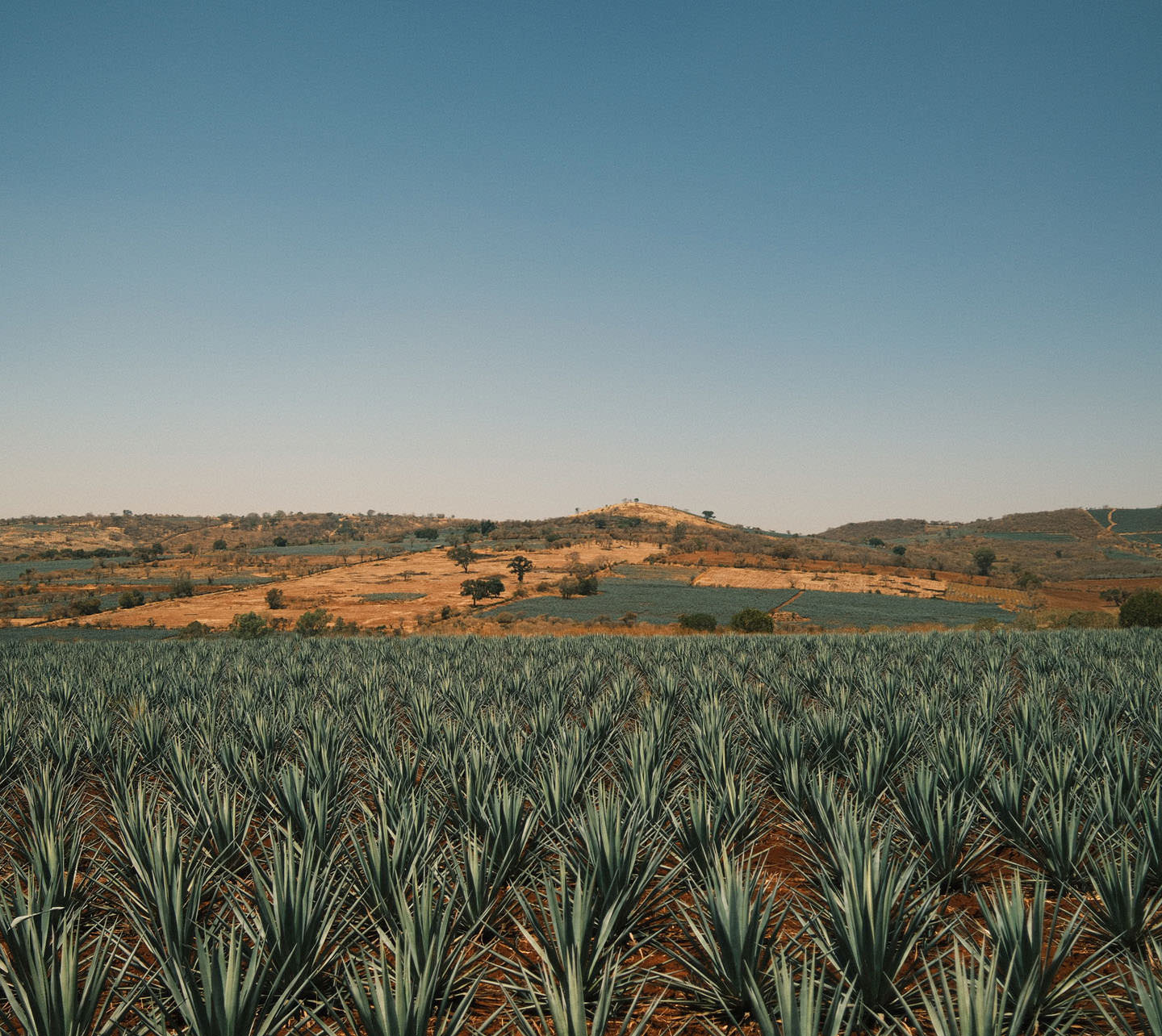
Agave fields in Jalisco. Photo by From Barrel to Bottle.
Like champagne and scotch, tequila is a protected designation. It must be made in Mexico, in specific regions—primarily the state of Jalisco, where the town of Tequila gives the spirit its name—and using only blue agave (agave azul). Tequila’s close relative mezcal uses various agave types, including from other areas, which impart different flavour notes to the final product (additionally, smoking the agave versus baking it introduces its distinctive woody taste). One hundred per cent agave tequila must also limit additives. While distillers may add sugar, caramel colour, oak extract, and glycerin to “pure” tequila, these additives may not exceed one per cent of the finished product. Patrón avoids these additives altogether.
The volcano is a recurring character in the land of tequila. It’s a major part of the spirit’s history, and Patrón leans into it.
This poses a challenge: how does a global, premium brand maintain consistency in a product prone to natural variation? Walking through the agave fields and the Patrón factory, the answer emerges in bits and pieces. There is no silver bullet but rather a dedication to time-consuming and sometimes even inefficient production methods. If that sounds like a criticism, the folks on the ground are happy to explain why this is what makes Patrón special. A little extra time, as with the brick ovens, can allow for more precision, controlling the details that are sometimes lost in rapid, bulk processing. “Replication, not automation” is the mantra at the Hacienda, where a painstaking process, heavy on those details, is what takes the agave hearts (called piñas for their resemblance to oversized pineapples) from the fields to the bottle.
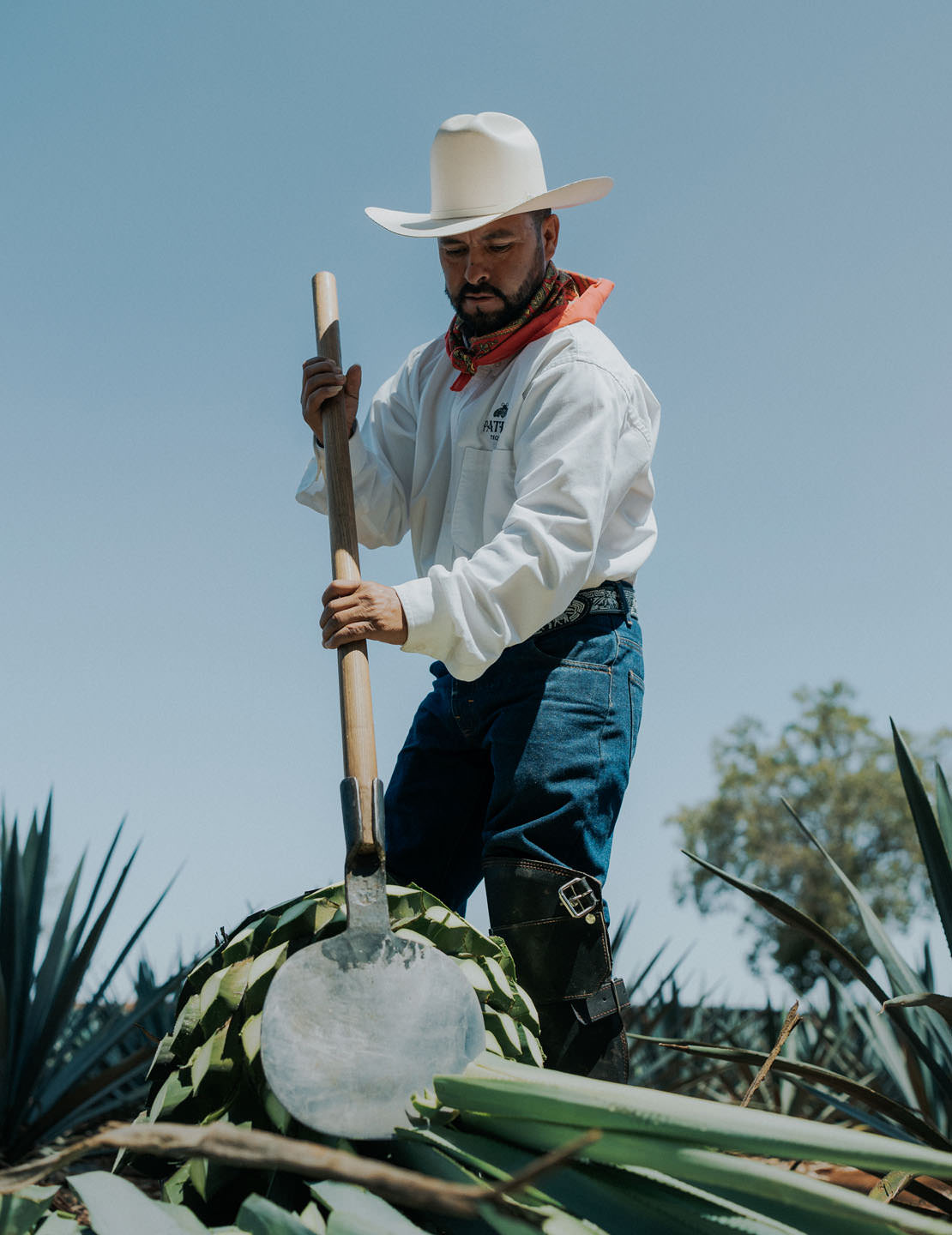
A Patrón jimador cuts the leaves off an agave piña. Photo by From Barrel to Bottle.
And Patrón’s process truly does start in the fields, where agave farmers, or jimadors, shave the leaves down as close to the piña as possible, ensuring a higher sugar content and fewer extraneous plant pieces that may give the tequila a bitter or acrid taste (added sugar could mask that bitterness, but with a strict no-additives policy, this is an important first step). The precise cutting process naturally results in a lighter yield, which—as the piñas are typically sold by weight—comes at a premium: Patrón is asking for extra work in hot, sunny fields by its supplying farmers.
That sun beating down is important for all agave used in tequila, and it’s not the only harsh condition the tough, spiky plants endure or, rather, rely on. The stunning red soil they grow in here is acidic and high in sodium oxide. This causes stress, in turn promoting more sugar production than in agave grown elsewhere. Perfect for tequila, in other words. Although I’m not in the town of Tequila, named for a nearby volcano, the local volcanic rocks account for this higher acidity.
The volcano is a recurring character in the land of tequila. It’s a major part of the spirit’s history, and Patrón leans into it. Beyond being the core drink’s namesake and providing the ideal soil for blue agave, volcanic stones (tahonas) are a traditional tool for pulverizing the cooked agave before it’s fermented and distilled. While the roller mill is faster, I am immediately struck by the difference in flavour when sampling tequila from both approaches, with the tahona-milled spirit retaining much more of the cooked agave flavour than its more modern counterpart.
Patrón has been using a blend of tahona- and roller-milled agave in its tequilas since it was founded in 1989. This means that every bottle incorporates elements of traditional tequila dating back to the introduction of distillation to Mexico by the Spanish in the 16th century. Suddenly, fermented agave drinks, already popular before European contact, could be further processed and distilled. At that time, the process utilized a tahona nearly identical to those used by Patrón today, although the original power force—a donkey—has been replaced with a mechanical pull. While most Patrón products do use some portion of roller-milled agave, its Roca line offers pure tahona tequila for those who prefer it.
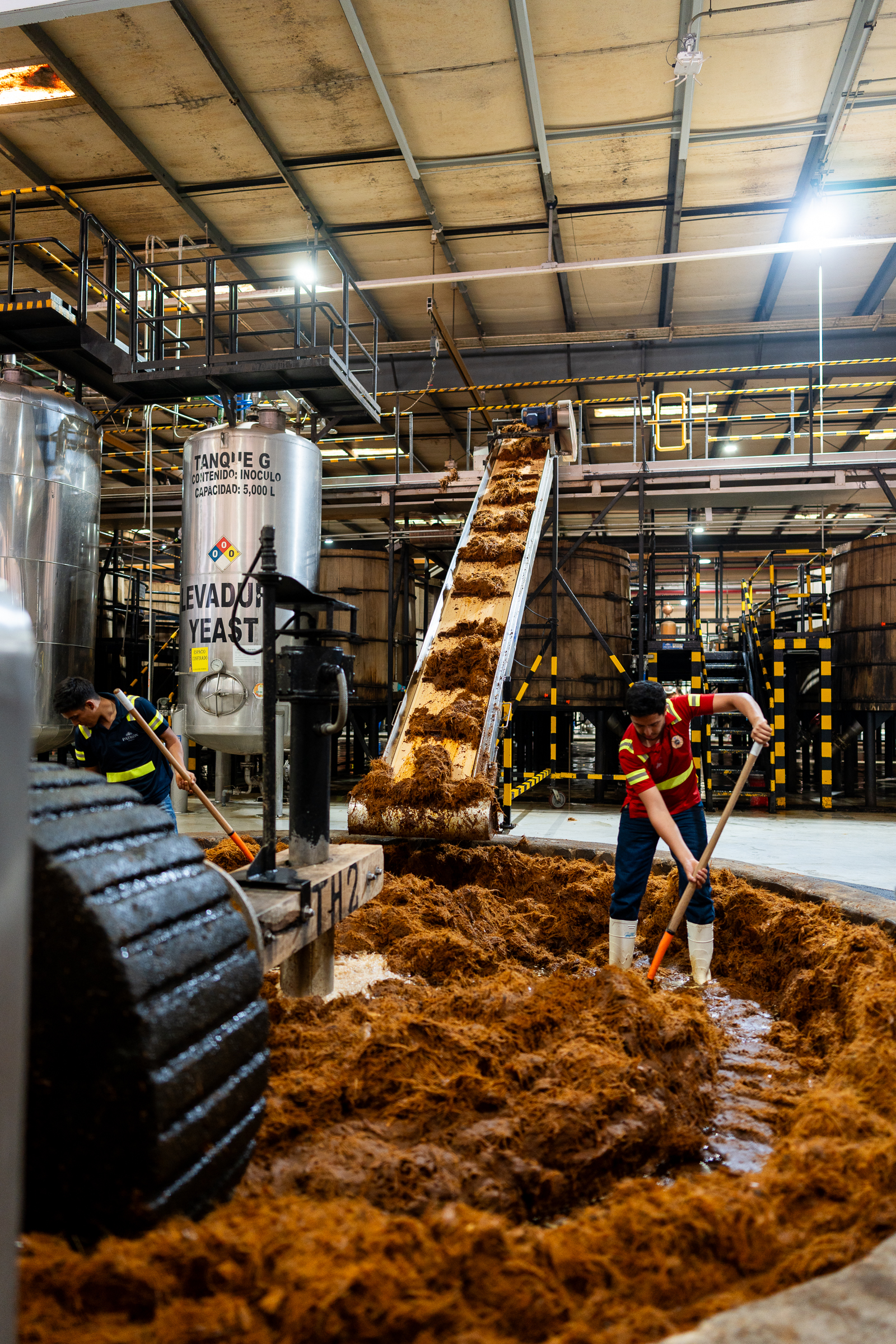
Workers at the tahona mill. Photo by From Barrel to Bottle.
The difference in flavour is far from subtle. Tasting the tequila produced from both processes side by side is eye-opening. The roller-milled agave imparts much more acidity, with hints of citrus, as well as mineral notes of gravel and even asphalt. Quite pleasant, but a dramatic departure from the smoother, more vegetal tahona-milled option.
Differences are also apparent at the fermentation stage. With large wooden vats of agave pulp in two separate sections of the distillery, a visitor would be forgiven for assuming two entirely different steps in tequila production were taking place. The tahona-milled agave retains more of its solids, piled high and smelling of overripe fruit as it ferments with the use of Patrón’s proprietary yeast. The roller-milled agave, in contrast, is ground nearly to a paste and mixed with water as part of the milling process. It sits in similar wooden vats but as a foaming liquid smelling like bread dough.
The liquids from each milling process are double distilled (or sometimes more, depending on the end product) in copper stills, with the two then combined, roughly 50/50, to produce Patrón’s signature Tequila Silver.
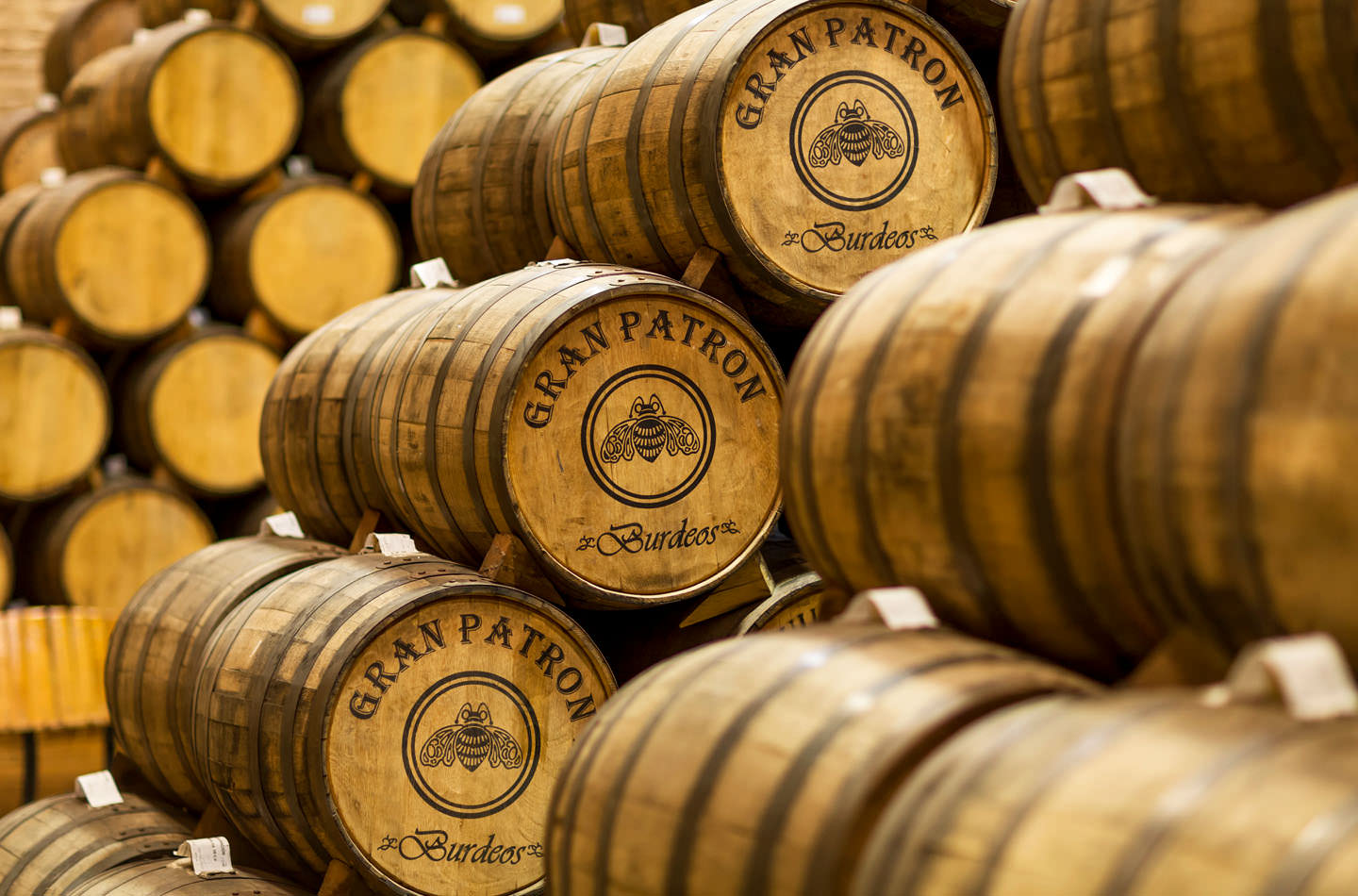
Gran Patrón Burdeos añejo is finished in vintage bordeaux wine barrels. Photo by From Barrel to Bottle.
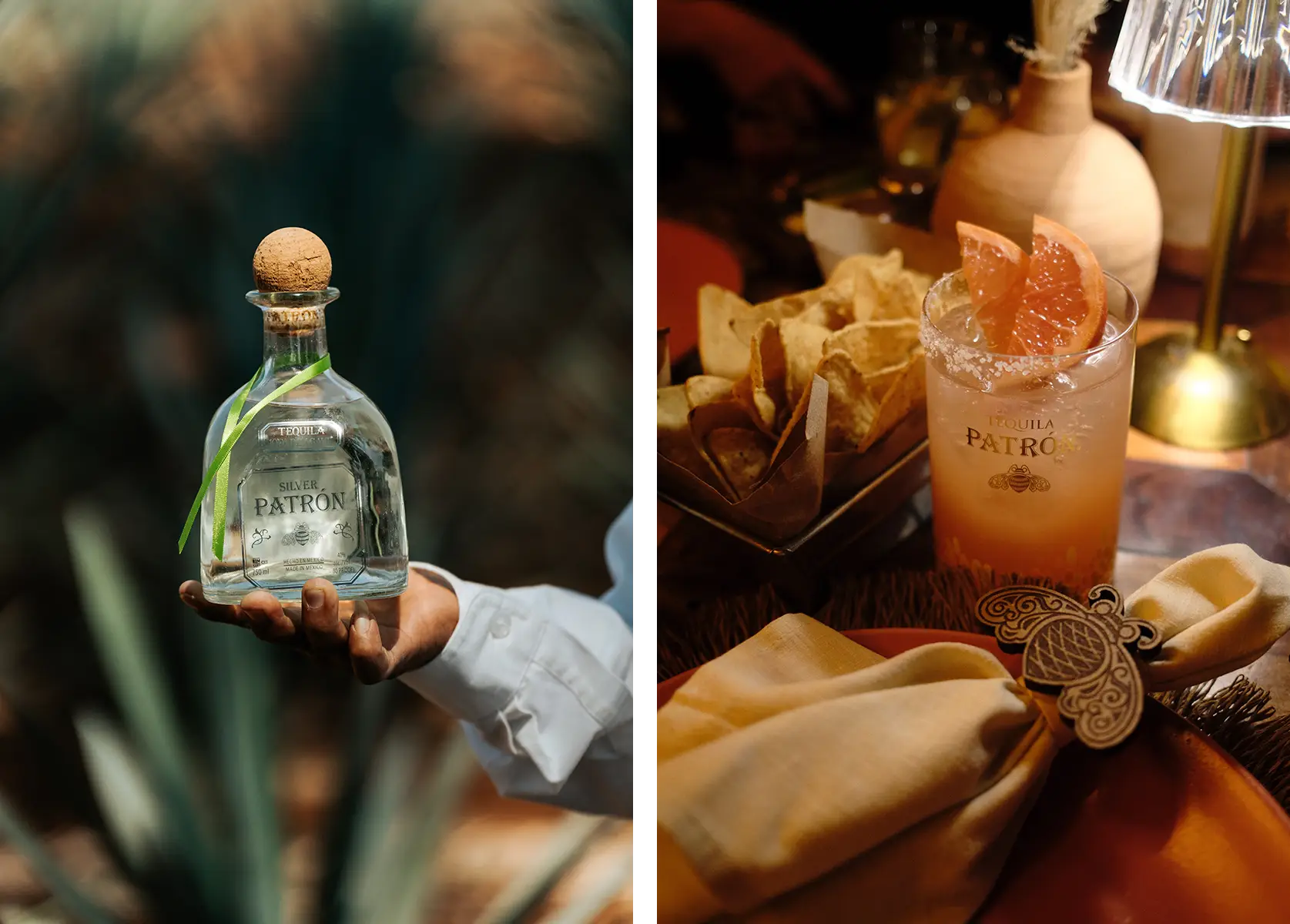
Left: A bottle of Patrón Silver. Right: A citrus cocktail made with Patrón tequila. Photos by From Barrel to Bottle.
Once aged, tequila can take on entirely new identities. Patrón Añejo takes on predictable oaky notes from its aging in the wood for at least a year, along with vanilla, orange, and toffee. Gran Patrón Burdeos, also an añejo, is aged in oak but finished in vintage bordeaux barrels. Reminiscent of a bourbon, the Burdeos picks up notes of raisin, cherry, and chocolate. I preferred its smooth sweetness and complexity when tasted neat, though sampling a few cocktails I was especially impressed when substituting it into a negroni and manhattan, where it countered the bitter notes of Campari and enhanced the richness of sweet vermouth, respectively.
I consider sneaking in one last run on my final day in Mexico. But the heat (and perhaps a few tequila cocktails) tempers my enthusiasm. These extreme conditions mean my sensible side wins out as I seek shade and plenty of water to drink. Luckily for all my fellow tequila aficionados, the uncompromising dry heat and direct sun are the perfect combination for producing that all-important alchemic agave.
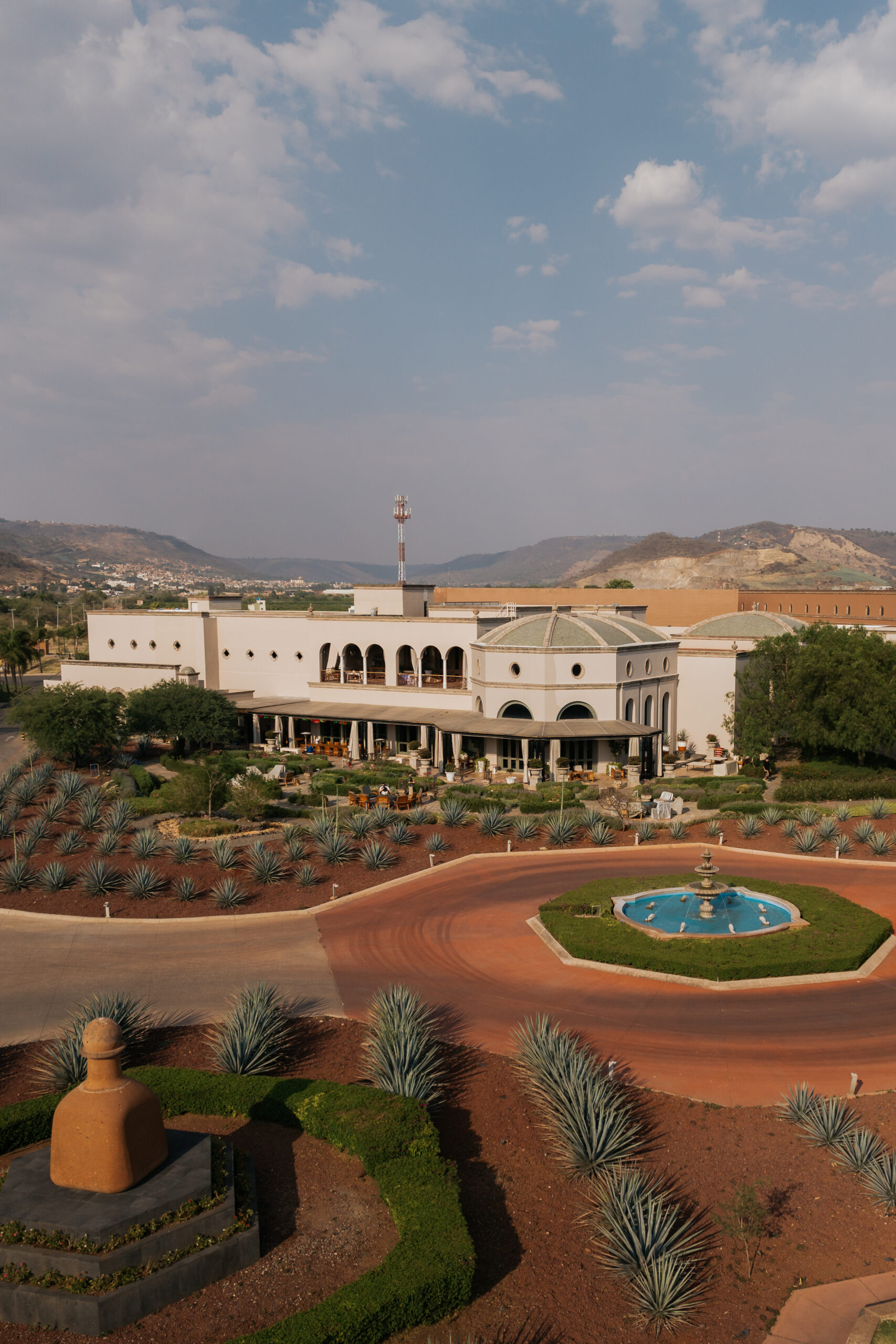
Hacienda Patrón. Photos by From Barrel to Bottle.
Read more from our Summer 2025 issue.









